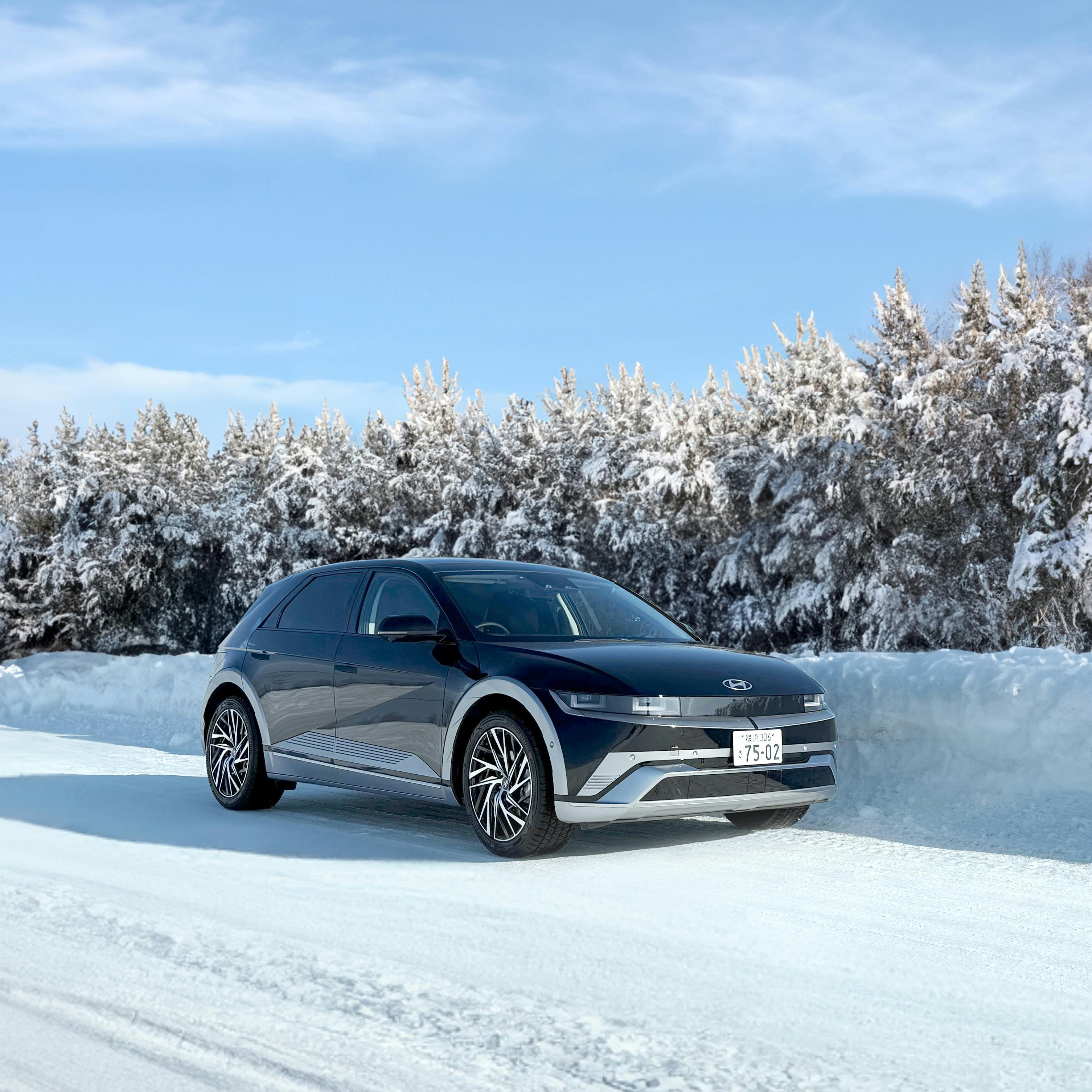
Electric vehicles (EVs) have soared in popularity, promising a cleaner, more efficient, and often more thrilling driving experience. Yet, as the seasons change and winter approaches, a persistent whisper turns into a louder conversation: “EVs lose half their range in the cold!” “You’ll get stranded in a snowstorm!” These winter horror stories, while often dramatic, stem from a kernel of truth that merits a closer look. For anyone driving an EV, or considering making the switch, understanding how cold weather impacts performance is key to navigating the colder months with confidence and efficiency. This isn’t about fear-mongering; it’s about being informed and prepared.
Indeed, all cars, whether powered by gasoline or electricity, experience a dip in efficiency when temperatures drop. Gasoline vehicles see reduced mileage due to reformulated fuels and denser cold air, but EVs face unique challenges tied directly to their battery chemistry and heating demands. The good news, however, is that this seasonal fluctuation doesn’t impact daily driving or charging as drastically as many might expect, especially with a bit of foresight and adaptation. While the range estimates provided by the EPA and manufacturers often assume ideal temperatures, usually around 70 degrees Fahrenheit, real-world winter conditions necessitate a different set of expectations.
In this in-depth guide, drawing on extensive real-world driving data from organizations like Recurrent, we aim to demystify the impact of freezing temperatures (defined as 32F or 0C) on a selection of popular electric vehicle models. We’ll delve into the fundamental reasons why EVs lose range in winter, from chemical slowdowns in the battery to the energy demands of cabin heating. More importantly, we’ll equip you with the knowledge to understand what to expect from your EV when the mercury plummets, offering practical insights gleaned from thousands of vehicles in real-world scenarios across the U.S. By understanding these dynamics, drivers can ensure their EV continues to perform reliably, even in the harshest winter climates.
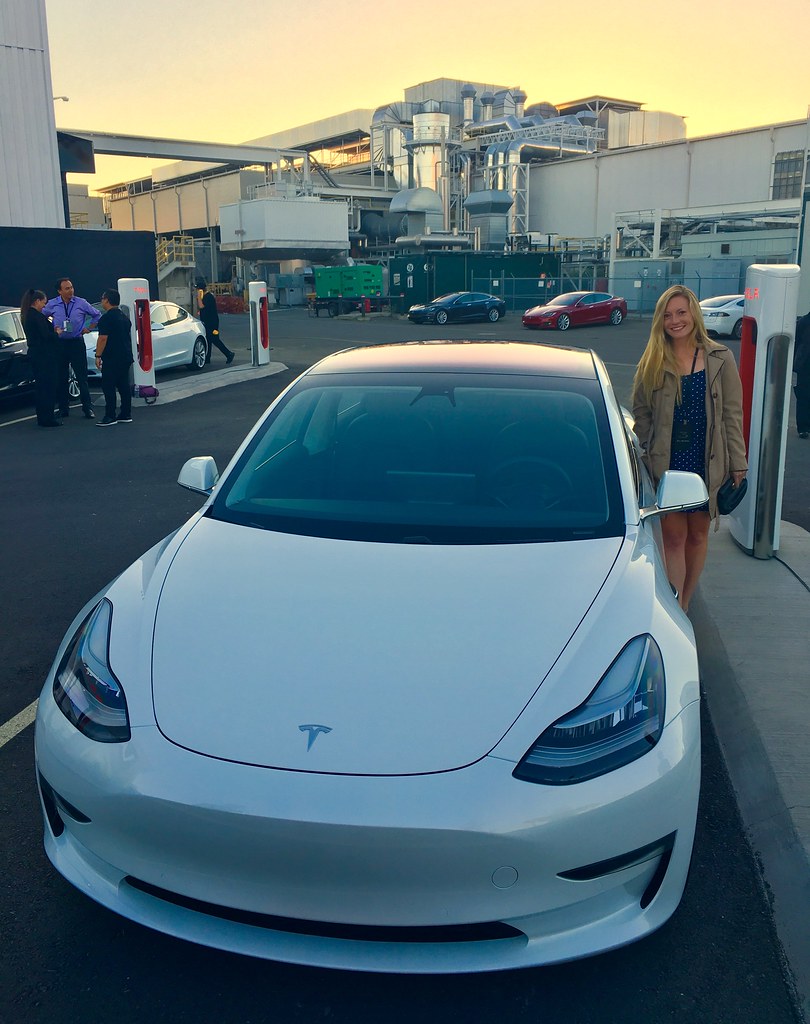
1. **Tesla Model 3**
The Tesla Model 3 has consistently been a benchmark in the EV market, celebrated for its performance and range. However, like all electric vehicles, its efficiency is influenced by external temperatures. Data from various studies, including those analyzing real-world driving conditions, indicates a noticeable reduction in range during colder months. For instance, the Model 3 Long Range, advertised at 358 miles, might see its practical range drop to around 270 miles in winter, representing approximately a 25% decrease. This is a significant figure, yet it remains well within the bounds of daily commuting for most users.
This range reduction is primarily attributable to a combination of factors. The lithium-ion batteries powering the Model 3, like all EV batteries, operate optimally within a moderate temperature range. When temperatures fall below freezing, the internal chemical reactions within the battery slow down, impeding its ability to deliver power efficiently. This chemical slowdown is a fundamental aspect of battery physics, meaning the battery has to work harder to maintain its output, drawing more energy for the same tasks.
Furthermore, the Model 3, like other EVs, must generate its own heat for the cabin and to maintain optimal battery temperature. Unlike gasoline cars that can repurpose waste heat from their engines, EVs rely on electric heaters, which draw directly from the high-voltage battery. If the Model 3 is not equipped with a heat pump (which varies by model year and trim), it uses a less efficient resistance heater, further contributing to higher energy consumption for comfort. This energy drain for heating significantly reduces the available capacity for driving, especially on longer journeys.
Despite these challenges, the Model 3 remains a highly capable winter vehicle, particularly with models equipped with heat pumps. Owners have adapted to these realities by utilizing features like preconditioning, which allows the vehicle to warm its battery and cabin while still plugged into a charger. This strategy minimizes the initial energy drain from the battery upon departure. While a 25% range reduction is noteworthy, it underscores the importance of informed planning for winter road trips, where public charging infrastructure becomes crucial.
Car Model Information: 2024 Ford Mustang EcoBoost Premium
Name: Tesla Model 3
Manufacturer: Tesla, Inc.
Production: 2017–present
Assembly: unbulleted list
Designer: Franz von Holzhausen
Class: Mid-size car
BodyStyle: Sedan (car)
Layout: unbulleted list
Related: Tesla Model Y
Motor: unbulleted list
Transmission: Single-speed fixed (9:1 ratio)
Battery: unbulleted list
ElectricRange: unbulleted list
Charging: unbulleted list
Wheelbase: cvt
Length: unbulleted list
Width: cvt
Height: unbulleted list
Weight: cvt
Caption: 2019 Tesla Model 3 Performance
Categories: 2020s cars, ANCAP large family cars, All-wheel-drive vehicles, All Wikipedia articles in need of updating, All Wikipedia articles written in American English
Summary: The Tesla Model 3 is a battery electric powered mid-size sedan with a fastback body style built by Tesla, Inc., introduced in 2017. The vehicle is marketed as being more affordable to more people than previous models made by Tesla. The Model 3 was the world’s top-selling plug-in electric car for three years, from 2018 to 2020, before the Tesla Model Y, a crossover SUV based on the Model 3 chassis, took the top spot. In June 2021, the Model 3 became the first electric car to pass global sales of 1 million.
A facelifted Model 3 with revamped interior and exterior styling was introduced in late 2023 for countries supplied by Gigafactory Shanghai and in early 2024 in North America and other countries supplied by the Tesla Fremont Factory.
Get more information about: Tesla Model 3
Buying a high-performing used car >>>
Brand: Tesla Model: Model 3
Price: $31,463 Mileage: 33,139 mi.
Read more about: Are Driver-Assist Systems Really Safe? A Comprehensive Consumer Reports Review and Real Owner Insights on Close Calls
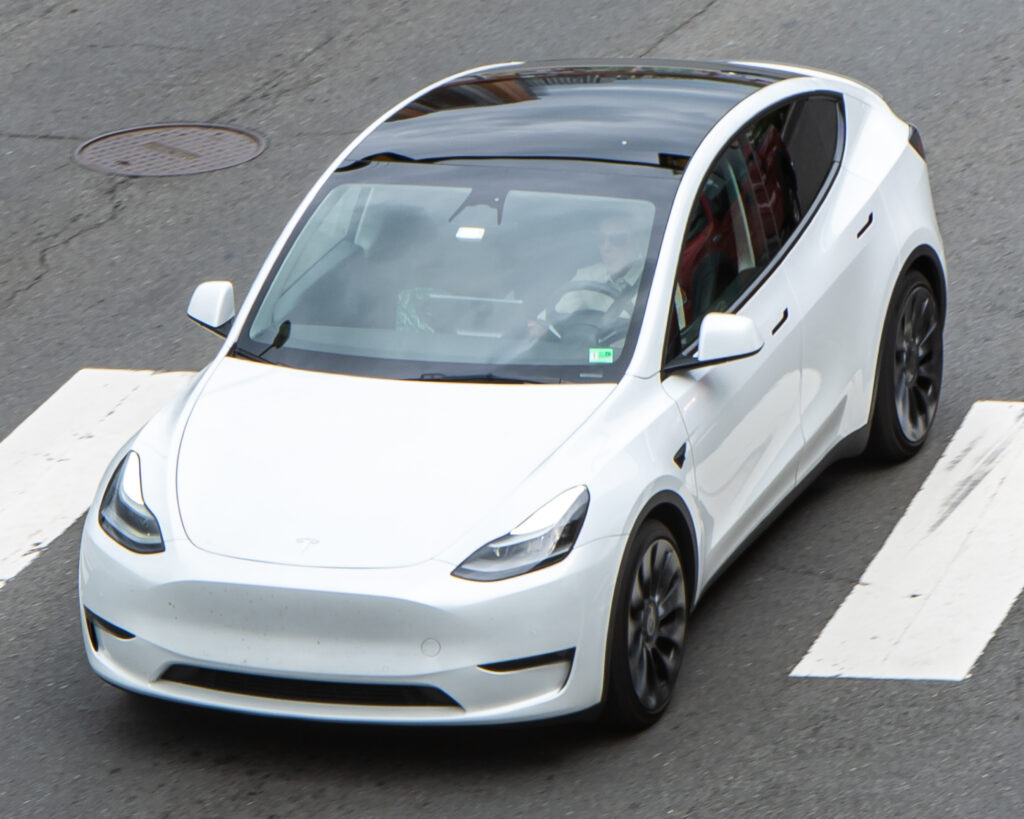
2. **Tesla Model Y**
The Tesla Model Y, sharing much of its underlying technology with the Model 3, also demonstrates similar characteristics when confronted with cold weather. As a popular electric SUV, its range capabilities are a key selling point, but winter conditions introduce specific challenges. Real-world testing has shown that the Model Y’s range can drop significantly; for example, from an EPA estimate of 327 miles to as low as 186 miles in cold weather, although the context indicates the ~186 miles is for a specific severe condition, not a general average. This substantial reduction highlights the combined effects of battery inefficiency and energy demand for heating, as observed in a range of EVs.
One of the critical factors influencing the Model Y’s winter performance is its thermal management system. Newer Tesla models, including the Model Y, are often equipped with heat pumps. This technology is a significant improvement over traditional resistance heaters, as it efficiently transfers heat from the outside air, even in cold conditions, to warm the cabin and battery. For every unit of electricity consumed, a heat pump can generate 3-4 units of heat, making it considerably more energy-efficient, although its efficiency does diminish below 14°F.
However, even with advanced heat pumps, the fundamental physics of cold weather battery operation still apply. The chemical and physical reactions within the Model Y’s lithium-ion battery slow down in freezing temperatures, leading to reduced available power and increased internal resistance. This means the battery is less efficient at both delivering power for driving and accepting energy during regenerative braking. Regenerative braking, a hallmark of EV efficiency, becomes less effective when the battery is cold, as it cannot charge as fast as it does at normal operating temperatures.
Owners of the Model Y, much like Model 3 drivers, emphasize the importance of preconditioning. Sarah from Chicago, a Tesla Model Y owner, noted, “I freaked out the first time I saw my range drop 30% overnight. But once I got used to it, I realized I wasn’t actually driving that far in a day anyway. I just make sure to preheat while plugged in, and it’s no big deal.” This sentiment underscores that while adjustments are needed, the vehicle’s winter performance is manageable with proper habits. Planning for longer charge times, especially at fast chargers, also becomes a necessity, as a cold battery limits charging voltage to protect the high-voltage pack.
Car Model Information: 2024 Ford Mustang EcoBoost Premium
Name: Tesla Model Y
Caption: Pre-refresh Tesla Model Y
Manufacturer: Tesla, Inc.
Production: January 2020 – present
Assembly: Unbulleted list
Designer: Franz von Holzhausen
Class: Unbulleted list
BodyStyle: SUV
Layout: Unbulleted list
Related: Unbulleted list
Motor: unbulleted list
Battery: val,Lithium-ion battery
ElectricRange: FTP-75
Charging: unbulleted list
Wheelbase: Unbulleted list
Length: Unbulleted list
Width: Unbulleted list
Height: Unbulleted list
Weight: Unbulleted list
Sp: us
Categories: 2020s cars, All Wikipedia articles written in American English, All articles lacking reliable references, All articles that may contain original research, All articles to be expanded
Summary: The Tesla Model Y is a battery electric compact crossover SUV produced by Tesla, Inc. since 2020. The vehicle was presented in March 2019 as the company’s fifth production model since its inception after the Roadster, Model S, Model X and Model 3.
After its 2019 introduction, the Model Y started production at the Tesla Fremont Factory in California, US in January 2020. Production at Giga Shanghai, China was added in December 2020, and at Gigafactory Texas, US since late 2021. Deliveries from Gigafactory Berlin-Brandenburg, Germany started in March 2022.
The Model Y is based on the Model 3 sedan and serves as a larger variant, with around 76 percent of parts being shared between the two and identical exterior and interior styling. While most Model Y are configured with two-row seating, in the US the Model Y offered optional third-row seats for a seven-passenger seating capacity until the 2025 refresh.
In 2023, Tesla delivered 1.2 million Model Ys, making it the world’s best-selling vehicle that year, surpassing the Toyota Corolla and becoming the first electric vehicle to claim that title. With at least 2.16 million units delivered since its start of production up to December 2023, the Model Y is also the most popular electric vehicle of all time. In 2024 sales were second to the Toyota RAV4. A refreshed version of the Model Y was revealed in January 2025, with upgrades similar to the upgraded Model 3.
In mid-2025, Tesla unveiled and released the Model Y L, a long-wheelbase, six-seat variant of the Model Y.
Get more information about: Tesla Model Y
Buying a high-performing used car >>>
Brand: Tesla Model: Model Y
Price: $31,463 Mileage: 33,139 mi.
Read more about: Are Driver-Assist Systems Really Safe? A Comprehensive Consumer Reports Review and Real Owner Insights on Close Calls
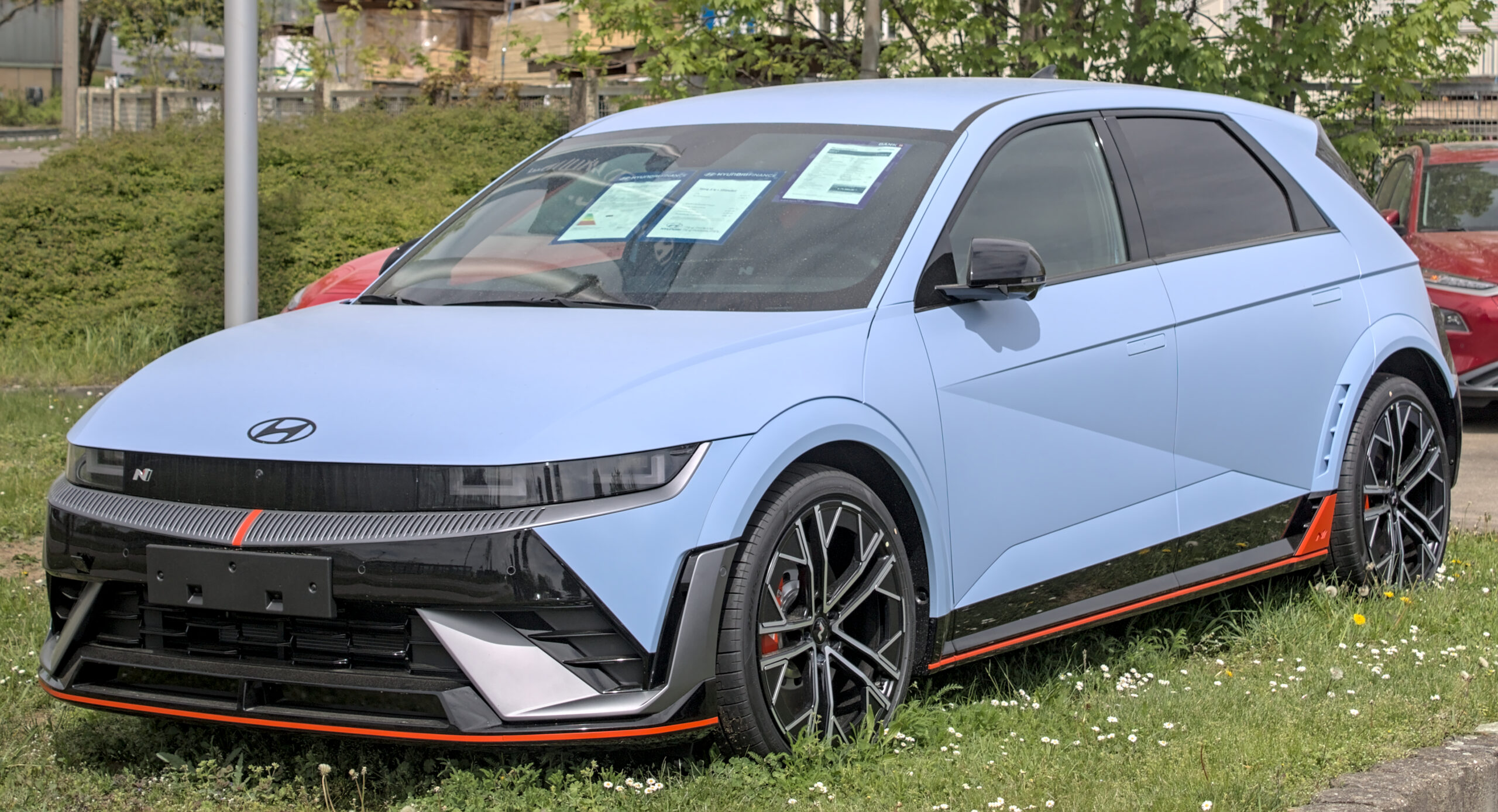
3. **Hyundai Ioniq 5**
The Hyundai Ioniq 5, a distinctive and highly-regarded electric crossover, has garnered praise for its unique design and robust charging capabilities. When it comes to winter performance, the Ioniq 5 is also subject to the universal laws of physics that govern all electric vehicles. While it often comes equipped with advanced features designed to optimize cold-weather operation, drivers should still anticipate a reduction in its advertised range.
The core reasons for this range loss are consistent across EV platforms: decreased battery efficiency and increased energy demands for heating. In freezing temperatures, the chemical reactions inside the Ioniq 5’s battery pack become sluggish, reducing the amount of energy it can deliver and increasing its internal resistance. This means the car expends more energy to accomplish the same amount of driving, leading to a shorter practical range than in ideal conditions.
Crucially, many Ioniq 5 models feature a heat pump, a technology that significantly enhances its winter credentials. As the context explains, heat pumps are far more efficient than resistive heaters at warming the cabin and maintaining battery performance, consuming less energy from the main traction battery. This technological advantage helps to mitigate some of the most substantial energy drains associated with cold weather driving, setting the Ioniq 5 apart from some older or less equipped EV counterparts.
Despite the heat pump, the Ioniq 5 still requires careful management in winter. Emma from Toronto, a Hyundai Ioniq 5 owner, shared her experience: “Fast charging in the cold is slower, for sure. I just plan my charging stops with extra time, and it’s fine.” This real-world feedback aligns with the understanding that a cold battery limits charging voltage, making preconditioning, either manually or via the in-car navigation system en route to a charger, a vital step to optimize charging speeds. For an Ioniq 5 rated at 303 miles, a 20-degree morning could see its real-world range drop to an estimated 200–220 miles, emphasizing the need for planning for longer trips.
Car Model Information: 2024 Ford Mustang EcoBoost Premium
Sp: uk
Name: Hyundai Ioniq 5
Manufacturer: Hyundai Motor Company
ModelCode: NE
Production: March 2021 – present
ModelYears: 2022–present (North America)
Assembly: Unbulleted list
Designer: Lee Ji-hyeon
Class: Compact crossover SUV
BodyStyle: SUV
Layout: Unbulleted list
Platform: Hyundai E-GMP
Related: Unbulleted list
Motor: permanent magnet synchronous motor
Battery: SK On
ElectricRange: cvt
Charging: ubl
Wheelbase: cvt
Length: Unbulleted list
Width: Unbulleted list
Height: Unbulleted list
Weight: Unbulleted list
Categories: All-wheel-drive vehicles, All Wikipedia articles written in British English, Articles containing Korean-language text, Articles with short description, CS1 Indonesian-language sources (id)
Summary: The Hyundai Ioniq 5 (Korean: 현대 아이오닉 5) is a battery electric compact crossover SUV produced by Hyundai since 2021. It is the first product to be marketed under the Ioniq sub-brand, and the first model developed on the Hyundai Electric Global Modular Platform (E-GMP).
Get more information about: Hyundai Ioniq 5
Buying a high-performing used car >>>
Brand: Hyundai Model: Ioniq 5
Price: $31,463 Mileage: 33,139 mi.
Read more about: Beyond the Horizon: The 15 Most Comfortable Cars for Long Road Trips, Reviewed by Experts
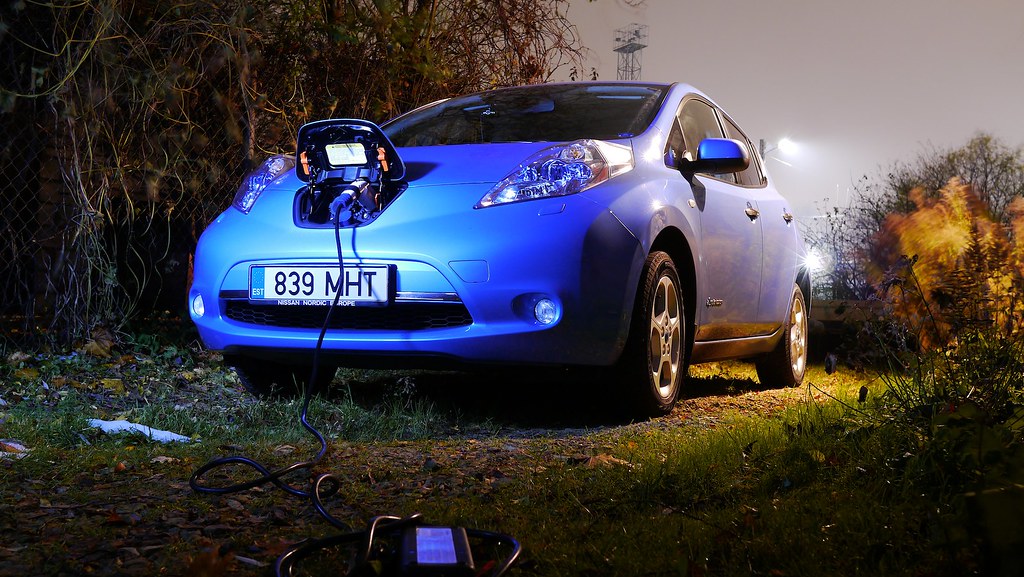
4. **Nissan LEAF**
The Nissan LEAF, particularly the SL/SV Plus model with its 62 kWh battery, has been a pioneer in the mass-market EV segment. While older models might have faced more pronounced cold-weather challenges, the larger battery capacity of the Plus versions, combined with ongoing advancements, helps to manage winter range anxiety. Nevertheless, the LEAF, too, experiences the unavoidable effects of cold temperatures on its electric powertrain.
Studies and real-world observations consistently show that the LEAF’s range can diminish in freezing conditions. The context mentions that for a Nissan Leaf rated at 226 miles, the winter range might be around 170 miles, representing approximately a 24% loss. This percentage aligns closely with the average range drops observed across many popular EV models, underscoring that while models vary, the impact of cold is a universal characteristic of current EV technology.
The primary drivers for this reduction are the inherent properties of lithium-ion batteries in cold environments. As chemical reactions slow down and internal resistance increases, the battery’s ability to efficiently deliver and store energy is compromised. Furthermore, the energy required to heat the cabin and defrosters draws directly from the main battery, diverting power that would otherwise be used for propulsion. This additional load becomes a significant factor in colder climates, where sustained heating is often necessary for driver comfort and visibility.
For LEAF owners, preconditioning the vehicle while it’s still plugged in is a highly recommended practice. This allows the car to draw energy from the grid to warm both the battery and the cabin, rather than depleting the stored battery charge. Additionally, utilizing features like heated seats and a heated steering wheel, if available, can significantly reduce the demand on the main cabin heater, thus conserving battery power. While the LEAF may not boast the extensive range of some newer, larger-battery EVs, understanding and implementing these strategies can make its winter performance entirely practical for daily driving needs.
Car Model Information: 2016 Nissan Titan XD PRO-4X
Name: Nissan Leaf
Caption: Third generation Nissan Leaf
Manufacturer: Nissan
Production: October 2010 – present
ModelYears: 2011–present
Class: Unbulleted list
BodyStyle: Unbulleted list
Layout: Front-engine, front-wheel-drive layout
Predecessor: Unbulleted list
Categories: 2020s cars, All articles containing potentially dated statements, All articles with dead external links, Articles containing Japanese-language text, Articles containing potentially dated statements from December 2015
Summary: The Nissan Leaf (Japanese: 日産・リーフ, Hepburn: Nissan Rīfu; stylized as LEAF) is a battery-electric car manufactured by Nissan, produced since 2010. It was offered exclusively as a 5-door hatchback which since then has become a crossover SUV model. The term “LEAF” serves as a backronym to leading environmentally-friendly affordable family car.
The Leaf was unveiled on 1 August 2009 as the world’s first mass market electric and zero-emission vehicle. Among other awards and recognition, it received the 2010 Green Car Vision Award, the 2011 European Car of the Year, the 2011 World Car of the Year, and the 2011–2012 Car of the Year Japan. The Leaf’s range on a full charge has been steadily increased from 117 km (73 miles) to 364 km (226 miles) (EPA rated) by the use of larger battery packs and several minor improvements.
As of September 2021, European sales totalled more than 208,000, and as of December 2021, over 165,000 had been sold in the U.S., and 157,000 in Japan. Global sales across both generations totalled 577,000 by February 2022. The Leaf was the world’s all-time top selling plug-in electric car until it was surpassed in early 2020 by the Tesla Model 3.
Get more information about: Nissan Leaf
Buying a high-performing used car >>>
Brand: Nissan Model: LEAF
Price: $19,461 Mileage: 128,080 mi.
Read more about: From Workhorse to Dream Machine: 10 Pickup Trucks Owners Absolutely Love—or Desperately Regret
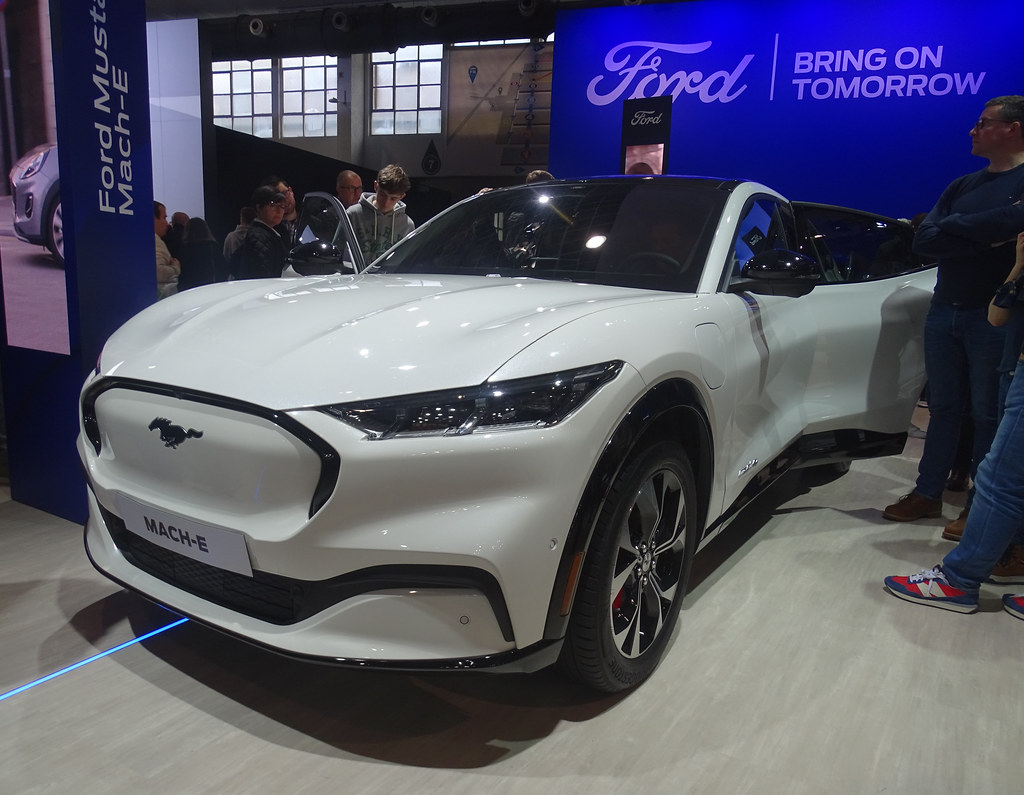
5. **Ford Mustang Mach-E**
The Ford Mustang Mach-E brought an iconic nameplate into the electric era, offering a compelling blend of performance and practicality. As a relatively new entrant into the rapidly expanding EV market, it benefits from contemporary battery and thermal management technologies. However, even with these advancements, the Mach-E is not immune to the cold-weather effects that challenge all electric vehicles.
Real-world data, including observations from various studies, indicates that the Mach-E experiences a quantifiable reduction in range during colder months. For instance, a Mach-E rated for 312 miles might see its practical range drop to approximately 230 miles in winter, translating to about a 26% loss. This figure positions the Mach-E’s winter performance squarely within the typical range loss observed across the EV industry. The context specifically notes that Ford’s data for the Mustang Mach-E includes only the 2021 model year without a heat pump, and no recent data is available, suggesting that newer models or those with heat pumps might perform differently.
The reasons behind this range reduction are multifaceted. The denser cold air creates more aerodynamic drag, requiring more energy to move the vehicle at highway speeds. Concurrently, winter tires, while essential for grip in icy conditions, often introduce more rolling resistance, further increasing energy consumption. These mechanical factors combine with the electrochemical challenges within the battery pack, where lower temperatures inhibit efficient energy delivery and charging.
Furthermore, the Mach-E’s cabin heating system, like that of other EVs, draws power directly from the high-voltage battery. Without a heat pump, a resistive heater would consume considerable energy to maintain comfortable cabin temperatures. This highlights the importance of choosing an EV with a heat pump if winter performance is a primary concern, or, for existing owners, adapting driving habits to minimize heater use by prioritizing heated seats and steering wheel. Planning for longer charging times at fast chargers is also a prudent measure, as a cold battery will limit charging voltage until it warms up.
Car Model Information: 2024 Ford Mustang EcoBoost Premium
Name: Ford Mustang Mach-E
Manufacturer: Ford Motor Company
Production: 2021–present
ModelYears: 2021–present
Assembly: Unbulleted list
Designer: Unbulleted list
Class: Compact crossover SUV
BodyStyle: coupe SUV
Layout: Unbulleted list
Platform: Ford Global Electrified 1 platform
Motor: Synchronous motor#Permanent-magnet
Wheelbase: Convert
Length: Convert
Width: Convert
Height: Convert
Weight: Convert
ElectricRange: Convert
Battery: 68–98 kWh
Charging: unbulleted list
Powerout: Convert
Sp: us
ModelCode: CX727
Categories: 2020s cars, All-wheel-drive vehicles, All Wikipedia articles written in American English, All articles needing additional references, Articles needing additional references from January 2023
Summary: The Ford Mustang Mach-E is a battery electric compact crossover SUV produced by Ford. Introduced on November 17, 2019, it went on sale in December 2020 as a 2021 model. The Mach-E is part of the Mustang series, with its name inspired by the Mach 1 variant of the first-generation Mustang. The car won the 2021 North American SUV of the Year Award.
Get more information about: Ford Mustang Mach-E
Buying a high-performing used car >>>
Brand: Ford Model: Mustang Mach-E
Price: $31,463 Mileage: 33,139 mi.
Read more about: Legends of Asphalt: The Definitive Guide to the American Muscle Car, from the Iconic Pontiac Firebird to the Enduring Chevy Camaro
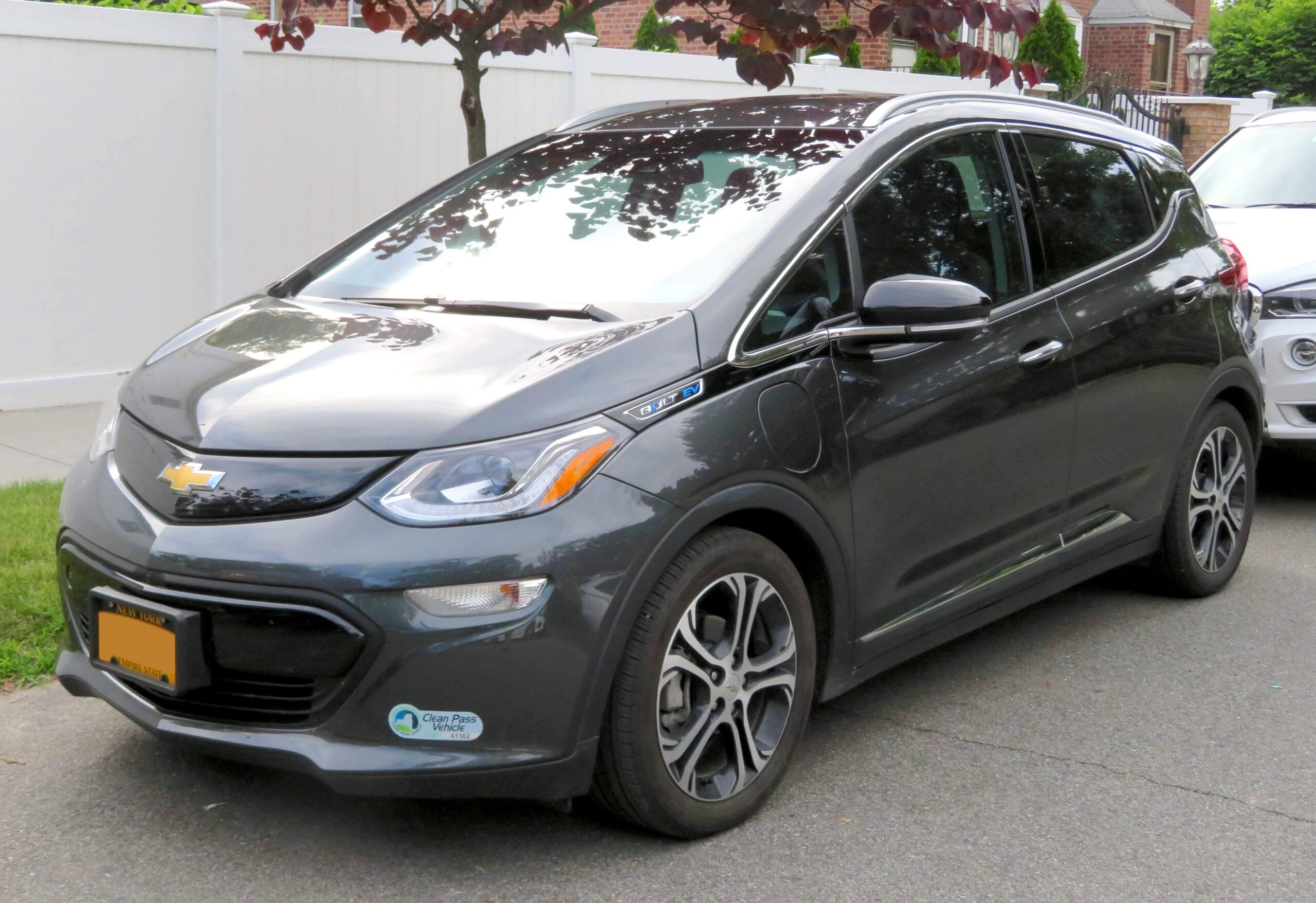
6. **Chevrolet Bolt**
The Chevrolet Bolt EV has been a popular choice for its relatively affordable price point and respectable range. Models from 2017 to 2022 have been part of extensive real-world driving data analysis, providing valuable insights into their winter performance. Like its counterparts, the Bolt experiences a decrease in efficiency when temperatures drop below freezing, a phenomenon that drivers quickly learn to adapt to.
The core scientific principles at play for the Bolt are identical to those affecting other EVs. The chemical reactions within its lithium-ion battery become slower and less efficient in cold temperatures. This leads to a reduction in the available power and a decrease in the battery’s ability to accept energy, particularly from regenerative braking. When the battery is cold, the battery management system may limit regenerative braking efficiency, meaning less energy is recouped during deceleration.
Mike from Minnesota, a Chevy Bolt owner, shared his experience: “The first winter, I noticed the heater was sucking up my range fast. Now I use the seat warmers more, and it helps a ton!” This anecdotal evidence perfectly illustrates the significant impact of cabin heating on the Bolt’s winter range. Electric heaters, especially resistive ones, draw substantial power directly from the main battery, making them a primary culprit in range reduction during cold weather. Using seat heaters and the heated steering wheel, which are far more energy-efficient, can dramatically extend the practical driving range.
To optimize the Bolt’s winter performance, preconditioning is a critical strategy. Warming the car’s battery and cabin while it’s still plugged into a charger allows the vehicle to draw power from the grid rather than its internal battery. This ensures the battery starts at a more optimal temperature, ready to deliver power more efficiently and accept regenerative braking energy more effectively. While the Bolt’s range may not be as extensive as some newer, more expensive EVs, informed driving practices make it a capable and reliable winter vehicle.
Continuing our journey through the nuances of winter EV performance, we now turn our attention to six additional popular electric vehicle models. Understanding their behavior in cold temperatures is crucial for current and prospective owners, providing a broader perspective on how different designs and technologies fare when the mercury plummets. Following this, we’ll dive into a comprehensive guide on practical strategies to navigate cold weather, explore the vital role of technological advancements like heat pumps, and glimpse into the exciting research aimed at making winter EV driving even more seamless.
Car Model Information: 2024 Ford Mustang EcoBoost Premium
Name: Chevrolet Bolt EV
Caption: 2022 Chevrolet Bolt EV
Manufacturer: General Motors
Production: 2016–2023
ModelYears: 2017–2023
Class: Subcompact car
BodyStyle: hatchback
Layout: Front-engine, front-wheel-drive layout
Predecessor: Chevrolet Spark EV
Categories: 2020s cars, All Wikipedia articles in need of updating, All articles containing potentially dated statements, All articles to be merged, All articles with unsourced statements
Summary: The Chevrolet Bolt EV (marketed in Europe as Opel Ampera-e) is a battery electric subcompact hatchback manufactured and marketed by General Motors under its Chevrolet brand from late 2016 until late 2023, with a brief hiatus between mid-2021 and early 2022.
The first-generation Bolt was developed and manufactured with LG Corporation. Sales of the 2017 Bolt began in California in December 2016; it was released nationwide and international markets release in 2017. A rebadged European variant was marketed as the Opel Ampera-e in mainland Europe. In 2017, the Bolt was the second-best-selling plug-in car in the United States. It was named the 2017 Motor Trend Car of the Year, the 2017 North American Car of the Year, an Automobile magazine 2017 All Star, and was listed in Time magazine’s Best 25 Inventions of 2016. The Ampera-e was discontinued after 2018. By the end of 2020, GM had sold 112,000 Bolt and Ampera-e cars worldwide. The first-generation Bolt had been subject to at least three recalls due to battery fire risks.
In mid-2023, GM officials said they would discontinue the Bolt; after outcry, they announced plans for a next-generation model. The second-generation Bolt, based on the Chevrolet Bolt EUV, was unveiled on October 9, 2025 and will go on sale in 2026 as a 2027 model.
Get more information about: Chevrolet Bolt
Buying a high-performing used car >>>
Brand: Chevrolet Model: Bolt EV
Price: $31,463 Mileage: 33,139 mi.
Read more about: Beyond the Icons: Unearthing 14 Underappreciated Muscle Cars That Deserve Your Attention
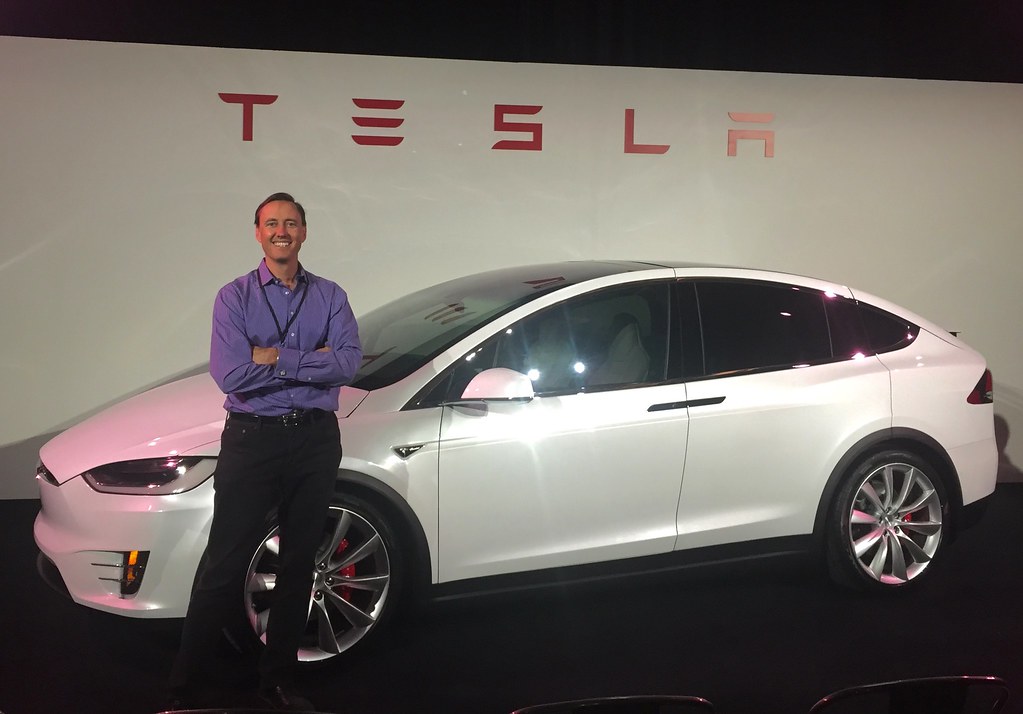
7. **Tesla Model X**
The Tesla Model X, known for its distinctive Falcon Wing doors and substantial range, also experiences the inherent challenges of cold weather on its performance. Fortunately, newer Model X vehicles are typically equipped with advanced thermal management systems, including a heat pump, which helps to mitigate some of the most significant energy drains associated with maintaining cabin and battery temperatures in freezing conditions. This integration signifies Tesla’s commitment to optimizing cold-weather efficiency, though it doesn’t entirely negate the impact of low temperatures.
Even with a heat pump, the fundamental principles of battery chemistry in cold environments remain. The lithium-ion battery in the Model X, like all EVs, will see its internal chemical reactions slow down, leading to a reduction in its ability to deliver peak power and accept charge efficiently. This means that while a heat pump significantly reduces the energy load for heating, the battery itself will still exhibit slightly decreased efficiency, impacting the overall practical range available to drivers.
For Model X owners, preconditioning the vehicle becomes an even more valuable strategy. By warming the cabin and battery while still plugged into a charger, the car draws power directly from the grid, ensuring the battery starts at a more optimal operating temperature. This not only improves initial driving efficiency but also prepares the battery for more effective regenerative braking and faster charging rates, crucial considerations for longer journeys or in particularly harsh climates.
Car Model Information: 2024 Ford Mustang EcoBoost Premium
Name: Tesla Model X
Manufacturer: Tesla, Inc.
Production: 2015–present
Assembly: unbulleted list
Designer: Franz von Holzhausen
Class: Crossover (automobile)
BodyStyle: 5-door SUV
Layout: unbulleted list
Doors: unbulleted list
Related: Tesla Model S
Motor: unbulleted list
Title: Discontinued
Transmission: unbulleted list
Battery: unbulleted list
ElectricRange: FTP-75
Wheelbase: cvt
Length: cvt
Width: cvt
Height: cvt
Weight: unbulleted list
Sp: us
Categories: 2020s cars, All Wikipedia articles in need of updating, All Wikipedia articles written in American English, All articles containing potentially dated statements, All articles lacking reliable references
Summary: The Tesla Model X is a battery electric mid-size luxury crossover SUV built by Tesla, Inc. since 2015. Developed from the full-sized sedan platform of the Tesla Model S, the vehicle uses distinctive falcon wing doors for rear passenger access.
The Model X has an EPA size class as an SUV, and shares around 30 percent of its content with the Model S, half of the originally planned 60 percent, and weighs about 10 percent more. Both the Model X and Model S are produced at the Tesla Factory in Fremont, California. The prototype was unveiled at Tesla’s design studios in Hawthorne, California, on February 9, 2012. First deliveries of the Model X began in September 2015. After one full year on the market, in 2016, the Model X ranked seventh among the world’s best-selling plug-in cars. A refresh of the Tesla Model X was introduced in 2021, offering a new “Plaid” performance model, along with a revised interior, powertrain, and suspension.Another update of the Model X was introduced in June 2025 with a new front bumper camera, new wheel designs, increased third-row space, dynamic ambient lighting, and adaptive headlights. The updates are similar to the Model S, which was updated at the same time.
As of July 2025, the Model X is available as a Long-Range version with an estimated EPA range of 352 miles (566 km) and a high performance “Plaid” version with an estimated EPA range of 335 miles (539 km).
Get more information about: Tesla Model X
Buying a high-performing used car >>>
Brand: Tesla Model: Model X
Price: $31,463 Mileage: 33,139 mi.
Read more about: Are Driver-Assist Systems Really Safe? A Comprehensive Consumer Reports Review and Real Owner Insights on Close Calls
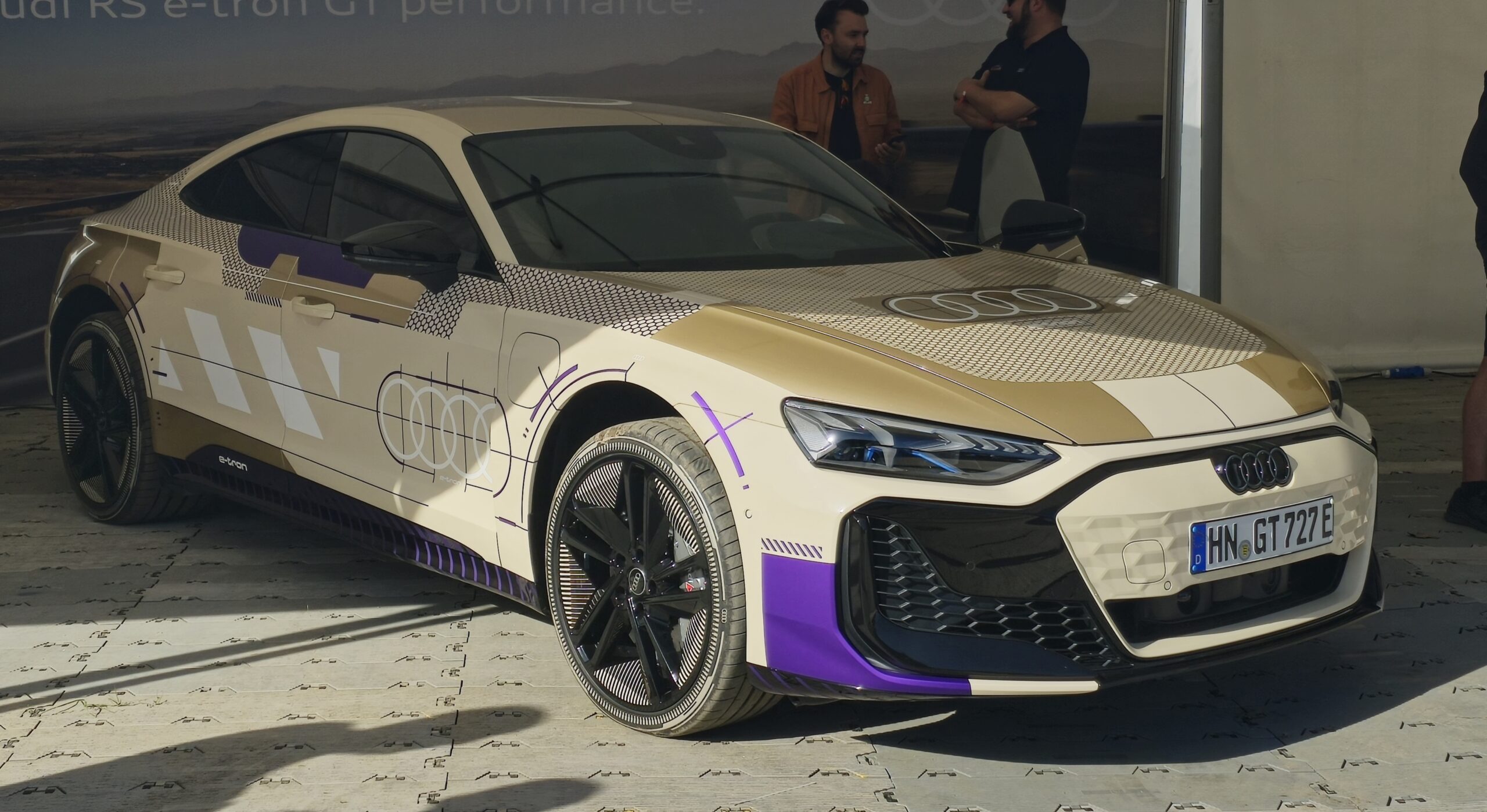
8. **Audi e-tron**
The Audi e-tron, including the 2021 and 2022 model years with the Premium Plus trim, is a luxury electric SUV that emphasizes refined driving and advanced technology. While specific range loss percentages for the e-tron in cold weather are not explicitly detailed in our aggregated data, it is subject to the same physical and chemical principles that affect all electric vehicles. Owners should anticipate a noticeable, albeit temporary, reduction in its estimated range when temperatures drop below freezing.
Audi’s engineering is robust, and premium EVs like the e-tron typically feature sophisticated thermal management systems designed to optimize battery performance across various conditions. While the context doesn’t explicitly state the presence of a heat pump for the e-tron, such advanced vehicles often employ efficient heating solutions. Nevertheless, the energy required to heat the spacious cabin and maintain optimal battery temperature directly impacts the overall available range, particularly during sustained cold spells.
Just as with other EVs, the colder ambient temperatures will cause the chemical reactions within the e-tron’s battery to become less efficient. This manifests as increased internal resistance and a reduced capacity for delivering and accepting energy, which in turn affects both driving range and charging speeds. Drivers may observe that fast charging sessions, while still rapid, might take slightly longer than in ideal conditions until the battery warms up to an optimal temperature.
To maximize the e-tron’s winter performance, owners can leverage features like remote preconditioning via their smartphone app. Setting departure times allows the vehicle to warm itself while still drawing power from the grid, conserving precious battery energy for driving. Additionally, prioritizing the use of heated seats and the heated steering wheel can offer comfort with less energy consumption compared to continuously running the main cabin heater.
Car Model Information: 2019 Audi e-tron Premium Plus
Categories: All Wikipedia articles in need of updating, All pages needing cleanup, Articles needing cleanup from September 2025, Articles with short description, CS1 German-language sources (de)
Summary: The Audi e-tron is a series of electric and hybrid cars shown by Audi from 2009 onwards. In 2012 Audi unveiled a plug-in hybrid version, the A3 Sportback e-tron, released to retail customers in Europe in August 2014, and slated for the U.S. in 2015. A decade after the unveiling of the first e-tron concept at the 2009 International Motor Show Germany, Audi’s first fully electric e-tron SUV went into production in 2019.
The name has also been used on some racing cars.
Get more information about: Audi e-tron
Buying a high-performing used car >>>
Brand: Audi Model: e-tron
Price: $23,591 Mileage: 32,696 mi.
Read more about: The Enduring Journey: Unpacking the Profound Reasons Why Americans Are Keeping Their Cars for Two Decades and Beyond
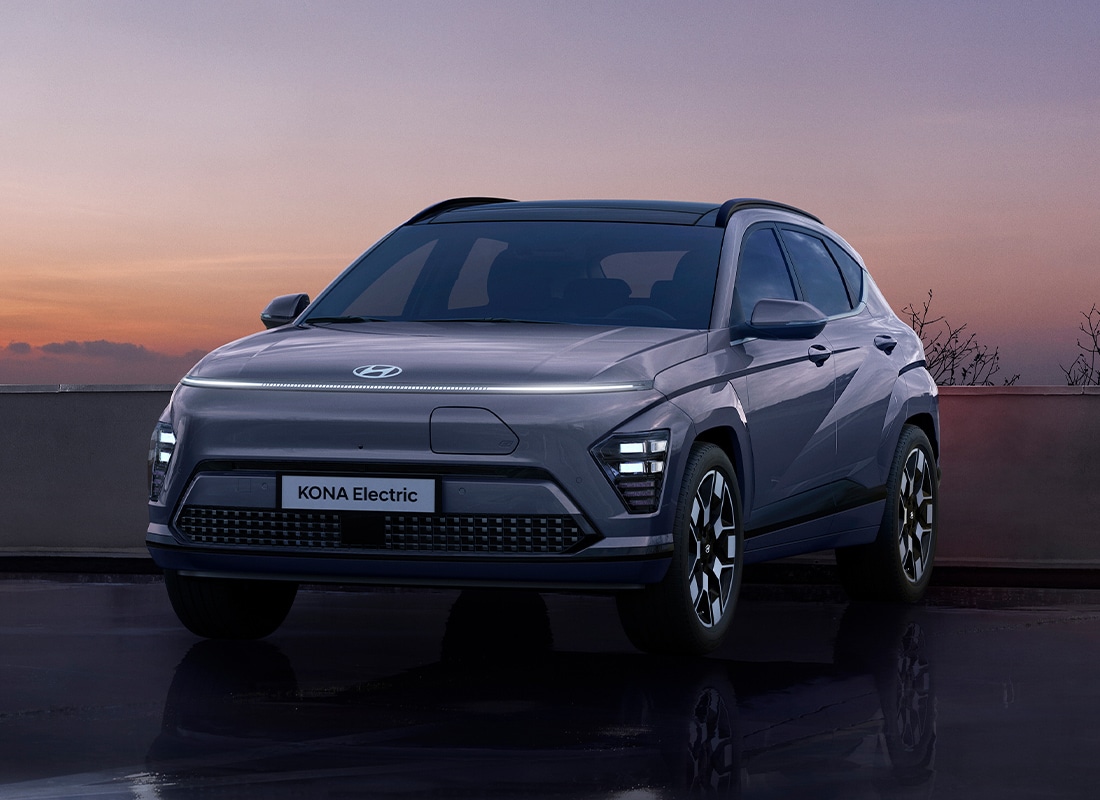
9. **Hyundai Kona Electric**
The Hyundai Kona Electric, particularly the 2020 and 2021 model years, stands out as a compact yet capable EV, known for its efficiency and practicality. Our aggregated data provides a clear indication of its winter performance: a Kona Electric rated for 258 miles might see its real-world range drop to approximately 205 miles in cold conditions, representing about a 20% loss. This figure is significant but aligns well within the expected range reductions seen across many popular EV models.
One of the advantages for the Kona Electric is the availability of a heat pump in many configurations, as highlighted in the broader context where Hyundai is listed among manufacturers offering this technology on select models. A heat pump is considerably more efficient than a traditional resistive heater, allowing the Kona Electric to warm its cabin and maintain battery temperatures with less energy drain from the high-voltage battery. This makes a tangible difference in retaining usable range during colder months.
Despite the efficiency of a heat pump, the fundamental physics of lithium-ion batteries in freezing temperatures still apply. The chemical processes within the Kona Electric’s battery become more sluggish, impacting its ability to efficiently deliver power for propulsion and accept energy from regenerative braking. Consequently, the battery management system may limit regenerative braking effectiveness until the battery reaches a warmer operating state.
Kona Electric owners can proactively manage winter range by consistently preconditioning their vehicle while it’s plugged in. This ensures the battery and cabin are at an optimal temperature upon departure, minimizing initial energy consumption. Coupled with the strategic use of heated seats and careful driving habits, the Kona Electric proves to be a reliable and efficient companion for daily commutes, even when winter bites hard.
Car Model Information: 2024 Ford Mustang EcoBoost Premium
Name: Hyundai Kona
Caption: Hyundai Kona N Line (SX2)
Manufacturer: Hyundai Motor Company
Aka: Hyundai Kauai (Portugal)
Production: 2017–present
ModelYears: 2018–present
Class: Subcompact crossover SUV
BodyStyle: SUV
Layout: ubl
Categories: 2020s cars, All-wheel-drive vehicles, All Wikipedia articles in need of updating, All Wikipedia articles written in British English, Articles containing Chinese-language text
Summary: The Hyundai Kona (Korean: 현대 코나) is a subcompact crossover SUV produced by the South Korean manufacturer Hyundai. The first-generation Kona debuted in June 2017 and the production version was revealed later that year. It is positioned between the Venue or Bayon and the Tucson in Hyundai crossover SUV line-up. The battery electric version called the Kona Electric (or Kona EV) was first launched in South Korea during the first half of 2018 and rolled out gradually worldwide afterwards.
Get more information about: Hyundai Kona
Buying a high-performing used car >>>
Brand: Hyundai Model: Kona Electric
Price: $31,463 Mileage: 33,139 mi.
Read more about: Are Driver-Assist Systems Really Safe? A Comprehensive Consumer Reports Review and Real Owner Insights on Close Calls
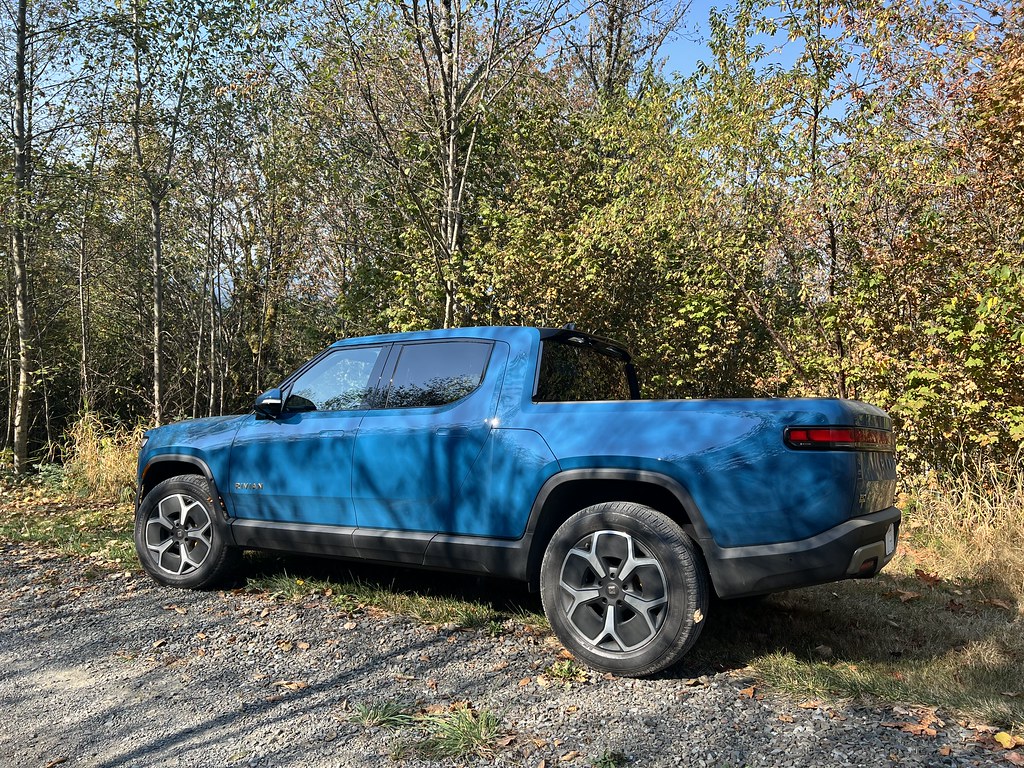
10. **Rivian R1T**
The Rivian R1T, an innovative all-electric pickup truck, brings robust performance and off-road capability to the EV market. As a heavy-duty vehicle designed for diverse applications, its winter performance is a crucial consideration. While specific range loss figures for the R1T are not provided in the immediate context, it is undeniably subject to the same cold-weather physics that impact all electric vehicles, including significant range reductions in freezing conditions.
Given its larger battery capacity and the demands of powering a truck, the R1T’s thermal management system plays an even more critical role in cold weather. It’s safe to infer that such a modern, high-performance EV would incorporate advanced heating solutions, potentially including a heat pump, to efficiently manage cabin temperature and maintain battery health. However, the sheer volume of space to heat and the energy required to move a larger, heavier vehicle in denser cold air will inherently consume more power than lighter passenger cars.
For Rivian R1T owners, anticipating longer charging times at public fast chargers is a necessary adjustment in winter. The battery management system, designed to protect the high-voltage pack, will limit charging voltage when the battery is cold. Preconditioning the battery, either manually or by using the in-car navigation system to direct to a charger, becomes vital for optimizing charging speeds and ensuring the battery is at its most receptive temperature.
Practical strategies for the R1T in winter mirror those for other EVs: consistent preconditioning while plugged in, prioritizing heated seats and steering wheel over the main cabin heater, and maintaining proper tire pressure. The combination of its powerful motors and intelligent traction control ensures the R1T remains highly capable in snowy or icy conditions, provided drivers are mindful of the amplified energy demands and plan their charging accordingly.
Car Model Information: 2022 Rivian R1T Launch Edition
Name: Rivian R1T
Manufacturer: Rivian
Production: 2021–present
ModelYears: 2022–present
Assembly: Rivian Automotive,LLC
Designer: Jeff Hammoud
Class: Mid-size car,luxury car,pickup truck
BodyStyle: crew cab
Layout: unbulleted list
Related: Rivian R1S
Motor: Alternating current,Permanent magnet motor
Transmission: Single-speed
Battery: kWh,lithium-ion battery
ElectricRange: unbulleted list
Abbr: on
Charging: unbulleted list
Wheelbase: 135.9 in
Length: 217.1 in
Width: 81.8 in
Height: 75.7 in
Weight: cvt
Sp: us
Powerout: unbulleted list
Chassis: Body-on-frame
Categories: All Wikipedia articles written in American English, All articles with vague or ambiguous time, Articles with short description, Commons category link is on Wikidata, Electric trucks
Summary: The Rivian R1T is a battery electric mid-size light duty luxury pickup truck produced by the American company Rivian. The first production R1T was manufactured in Illinois on September 28, 2021, and was delivered to a customer. The official EPA range for the Rivian R1T (MY 2022–2024) ranges from 255–420 miles (410–676 km), depending on drivetrain, battery pack capacity and wheel size.
Get more information about: Rivian R1T
Buying a high-performing used car >>>
Brand: Rivian Model: R1T
Price: $55,436 Mileage: 28,767 mi.
Read more about: Are Driver-Assist Systems Really Safe? A Comprehensive Consumer Reports Review and Real Owner Insights on Close Calls
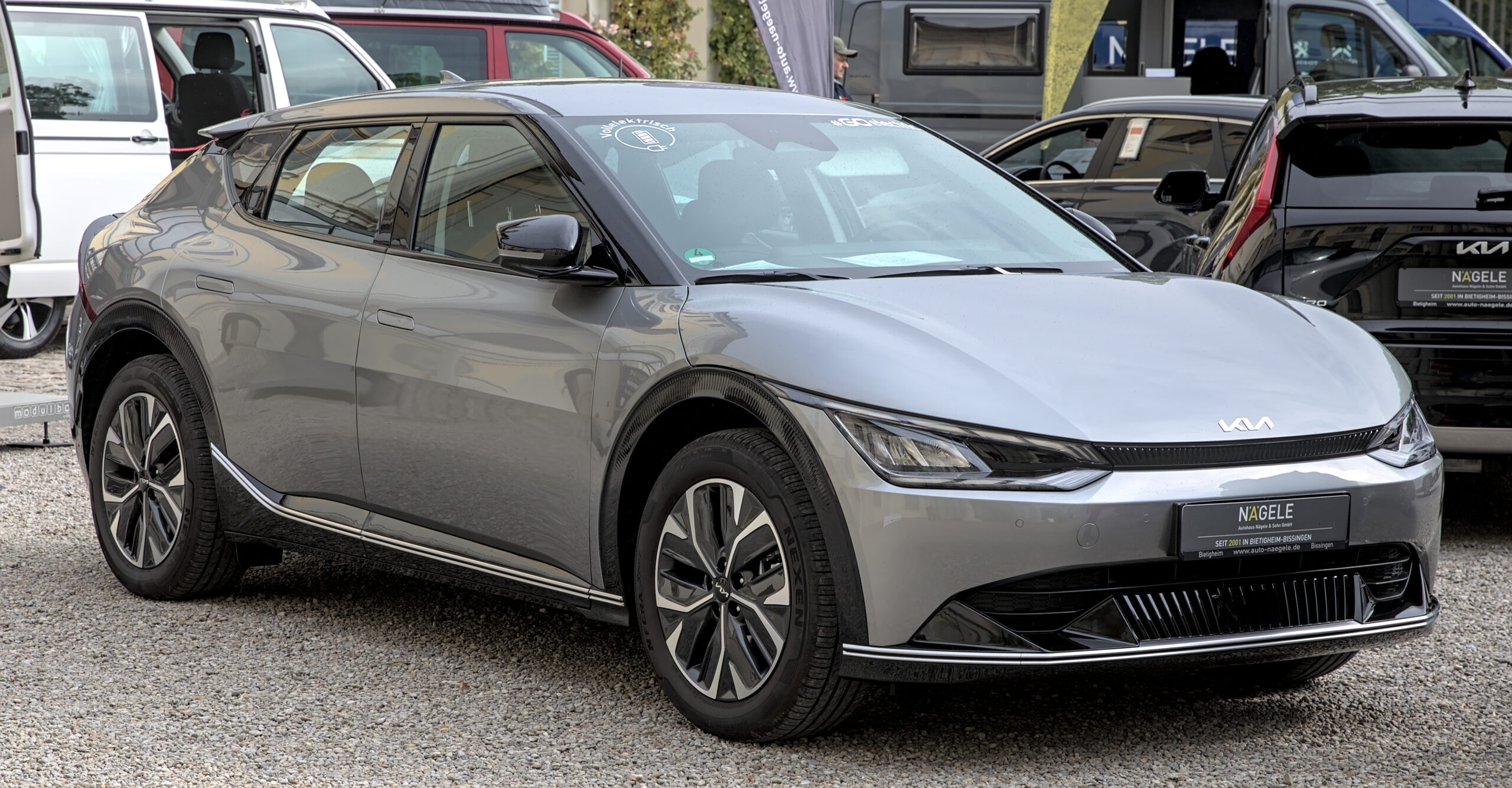
11. **KIA EV6**
The KIA EV6 has rapidly established itself as a compelling electric crossover, lauded for its sleek design, rapid charging, and dynamic driving characteristics. Like its sibling, the Hyundai Ioniq 5, the EV6 is often equipped with a heat pump on select models, a significant advantage in cold climates. This technology allows the vehicle to warm its cabin and battery more efficiently by transferring heat from the outside air, reducing the reliance on less efficient resistive heating elements.
Despite the benefit of a heat pump, the EV6 will still experience a reduction in range when confronted with freezing temperatures, a universal characteristic for lithium-ion powered vehicles. The chemical reactions within its battery pack become less efficient, requiring more energy to deliver the same amount of power. This impacts both the achievable driving range and the effectiveness of regenerative braking, which may be limited when the battery is too cold to accept energy quickly.
To counteract these effects, EV6 owners should prioritize smart charging and preconditioning habits. Utilizing the in-car navigation system to plot a route to a fast charger is especially beneficial, as many newer EVs, including the EV6, will automatically precondition the battery to its optimal charging temperature. This minimizes the time spent charging in cold conditions, ensuring the fastest possible top-up.
Beyond technological aids, driver behavior also plays a crucial role. Opting for heated seats and steering wheel, driving smoothly to avoid sudden accelerations or harsh braking, and keeping the vehicle plugged in whenever possible are all effective strategies for maximizing the EV6’s range during the colder months. These practices help conserve battery energy, making winter driving a more predictable and less anxiety-inducing experience.
Car Model Information: 2024 Kia EV6 Light
Name: Kia EV6
Caption: Kia EV6 GT-Line (pre-facelift)
Manufacturer: Kia
ModelCode: CV
Production: 2021–present
ModelYears: 2022–present (North America)
Assembly: Hwaseong, Gyeonggi
Designer: unbulleted list
Class: Compact crossover SUV
BodyStyle: SUV
Layout: unbulleted list
Platform: Hyundai E-GMP
Related: unbulleted list
Motor: Permanent magnet synchronous motor
Powerout: cvt
Transmission: reduction gear
Battery: kWh
Title: 2025 Kia EV6 refresh teased
Url: https://www.caranddriver.com/news/a60670307/2025-kia-ev6-refresh-teased/
AccessDate: Fri May 24 2024 17:00:00 GMT-0700 (Pacific Daylight Time)
Website: Car and Driver
Language: en
ElectricRange: 510 km
Abbr: on (GT)
Charging: unbulleted list
Wheelbase: 2900 mm
Length: convert
Width: convert
Height: 1550 mm
Weight: convert
Categories: All-wheel-drive vehicles, All Wikipedia articles written in British English, Articles containing Korean-language text, Articles with short description, CS1 German-language sources (de)
Summary: The Kia EV6 (Korean: 기아 EV6) is a battery electric compact crossover SUV produced by Kia. Introduced in March 2021, it is the first Kia dedicated electric vehicle, and the first model developed on the Electric Global Modular Platform (E-GMP) similar to the Hyundai Ioniq 5. It is also the first model to be named under the new nomenclature designated for a line of Kia electric cars, EV series, which will range from EV1 to EV9. The EV6 is the 2022 European Car of the Year.
Get more information about: Kia EV6
Buying a high-performing used car >>>
Brand: KIA Model: EV6
Price: $28,108 Mileage: 6,523 mi.
Read more about: The Ultimate Guide to Family-Friendly Cars: Top Picks & Essential Considerations for Kids and Pets in 2025
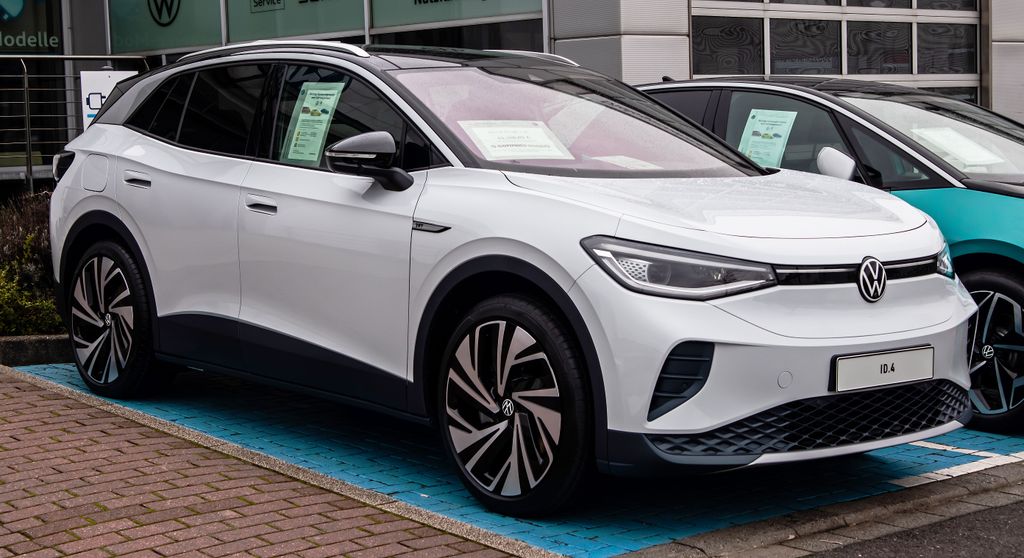
12. **VW ID.4**
The Volkswagen ID.4, specifically the 2021 model year with its 82 kWh battery, is a strong contender in the electric SUV segment, offering a comfortable ride and practical usability. While exact range loss data for the ID.4 in cold weather is not specified within the immediate context, its performance will align with the general observations for EVs: anticipate a noticeable, temporary decrease in its advertised range when temperatures consistently remain below freezing.
Similar to other modern EVs, the ID.4 incorporates thermal management systems to handle varying temperatures. However, whether a specific trim or model year includes a heat pump can significantly influence its cold-weather efficiency. Without a heat pump, the ID.4 would rely on a resistive heater for cabin comfort, drawing considerable energy directly from the high-voltage battery and impacting available driving range more severely.
Owners of the ID.4 can proactively manage these winter impacts through diligent use of the vehicle’s preconditioning features. Warming the battery and cabin while the vehicle is still connected to a charger is paramount. This strategy allows the car to utilize grid power for these energy-intensive tasks, ensuring the battery starts its journey at a more optimal temperature, thereby improving both driving efficiency and the effectiveness of regenerative braking.
Furthermore, embracing energy-saving comfort options, such as heated seats and, if available, a heated steering wheel, can dramatically reduce the overall energy demand for cabin heating. These targeted heating elements are significantly more efficient than attempting to heat the entire interior space. By combining these smart practices with careful driving habits, ID.4 owners can ensure their vehicle remains a practical and dependable mode of transport throughout the winter.
### Practical Strategies to Conquer Winter Range Anxiety
Beyond understanding how individual EV models perform, a proactive approach to winter driving habits can make all the difference. The good news is that many strategies are simple to implement and significantly mitigate cold weather impacts, turning potential frustration into predictable efficiency. It takes more energy to warm up a cold car than to keep a warm car warm, so prioritizing preparation is key.
One of the most impactful strategies is **preconditioning** your EV. Most electric vehicles allow you to warm up the battery and cabin while still plugged in, either through a smartphone app or by setting a departure time. This crucial step draws power from the grid rather than depleting your stored battery charge, ensuring your battery starts at an optimal temperature for efficiency and readiness for regenerative braking.
Once on the road, smart climate control becomes your best friend. Instead of solely relying on the main cabin heater, which draws substantial power from the high-voltage battery, **prioritize using heated seats and a heated steering wheel**. These features are far more energy-efficient, providing targeted warmth where it’s most effective, thus leaving more battery capacity for actual driving.
Another fundamental tip is to **keep your car plugged in whenever possible**, especially overnight or when parked for extended periods in cold conditions. Storing your EV plugged in, ideally with a maximum charge setting of 70 or 80%, allows the vehicle to draw energy from the wall to keep its battery warm, preventing a significant drop in charge or efficiency from the cold.
Driving style also plays a role. **Driving smoothly**, avoiding sudden acceleration and harsh braking, can help conserve energy. Similarly, **checking your tire pressure** regularly is vital, as cold air lowers pressure, and low pressure increases rolling resistance, demanding more energy from the battery. When roads are icy, consider **reducing the amount of regenerative braking** to maintain better control and allow for more deliberate mechanical braking.
Finally, **plan for longer charge times**, particularly at fast chargers. To protect the high-voltage battery, many cars limit the charging voltage when the battery is cold, meaning a cold battery won’t charge as fast. However, using the in-car navigation system to head to a charger can help, as many newer EVs will precondition the battery for optimal charging temperature, reducing the overall time spent charging.
### Heat Pumps: A Game-Changer in Cold Weather Efficiency
One of the most significant technological advancements addressing winter range loss is the widespread adoption of **heat pumps** in electric vehicles. Unlike conventional gasoline cars that repurpose waste heat from their engines, EVs produce very little waste heat. Therefore, they must generate their own heat for the cabin and to maintain battery performance.
Historically, this was often done through less efficient resistance heaters, which are essentially large electric coils that draw substantial power directly from the battery. Heat pumps, on the other hand, operate more like an air conditioner in reverse, transferring heat from the outside air, even in cold conditions, to warm the cabin and battery. For every unit of electricity consumed, a heat pump can generate 3-4 units of heat, making it dramatically more energy-efficient than resistive heating.
While a heat pump’s efficiency does diminish as temperatures drop below 14°F, it still offers a considerable advantage in a wide range of cold-weather scenarios. Automakers like Tesla, Hyundai, Kia, and Nissan have increasingly integrated heat pumps into their newer models and trims, recognizing their critical role in optimizing winter performance and extending practical driving range. This innovation is a clear indicator that the industry is actively working to make EVs more robust for all climates.
### The Road Ahead: Ongoing Research and Future Solutions
The challenges of winter EV performance are well-understood by automakers and researchers, and significant efforts are underway to further enhance electric vehicles for cold climates. This isn’t just about incremental improvements; it’s about pioneering solutions that could fundamentally transform how EVs behave in freezing temperatures.
Researchers at institutions like the University of Michigan are exploring changes in battery manufacturing processes. One intriguing proposal involves applying a coat of a glassy material made of lithium borate-carbonate, which has shown promise in enhancing charging speeds even in subfreezing temperatures. Test cells with this modification reportedly charged 500% faster in such conditions, pointing towards radical improvements in battery resilience.
Other research, such as that published in the Journal of Energy Storage, investigates advanced thermal management systems within the battery pack itself. Ideas include increasing the number of fluid channels to improve temperature distribution, which could allow batteries to reach ideal operating temperatures up to twice as fast. These internal improvements aim to reduce the time and energy spent just warming the battery, freeing up more power for driving.
Furthermore, the World Electric Vehicle Journal has explored innovative uses for existing EV capabilities, suggesting that energy harvested from regenerative braking could be strategically utilized to heat the battery when external temperatures fall. This would not only make regenerative braking more effective in cold conditions but also recoup some of the lost range by reducing the need for separate battery heating systems. While the commercial implementation timelines for these cutting-edge solutions remain uncertain, the sheer volume and creativity of ongoing research are incredibly encouraging.
Car Model Information: 2024 Volkswagen ID.4 Standard
Name: Volkswagen ID.4/ID.5
Caption: 2020 Volkswagen ID.4 Pro
Manufacturer: Volkswagen
ModelCode: E21 (ID.4),E39 (ID.5)
Production: 2020–present
Assembly: ubl
Designer: Klaus Zyciora
Class: Compact crossover SUV
BodyStyle: SUV
Platform: Volkswagen Group MEB platform
Related: Volkswagen ID.3,Volkswagen ID.Buzz,Volkswagen ID.6,Škoda Enyaq,Audi Q4 e-tron,Cupra Tavascan,Ford Explorer EV,Ford Capri EV
Layout: Rear-motor, rear-wheel-drive
Motor: APP 550,Brushless DC electric motor
Battery: Lithium-ion battery
ElectricRange: 77-82 kWh, since 2024:,{{convert,263-291,mi,km,0,abbr=on
Charging: ubl
Wheelbase: 2765 mm
Abbr: on (ID.5)
Length: 4584 mm
Width: 1852 mm
Height: 1636 mm
Weight: convert
Powerout: Convert
ModelYears: 2021–present
Categories: All-wheel-drive vehicles, All Wikipedia articles in need of updating, All Wikipedia articles written in British English, Articles with short description, CS1 German-language sources (de)
Summary: The Volkswagen ID.4 and Volkswagen ID.5 are battery electric compact crossover SUVs produced by Volkswagen. Based on the MEB platform, the ID.4 is the second model of the Volkswagen ID. series. The production version of the ID.4 debuted in September 2020 as the first fully-electric crossover SUV under the Volkswagen brand, while the coupe-shaped variant of the ID.4 (akin to the Audi Q8 Sportback e-tron) is marketed as the Volkswagen ID.5 and was presented in November 2021.
The ID.4 is positioned by Volkswagen as a high-volume, mass-market electric vehicle — a car for “the millions, not the millionaires,” as the company claimed in its advertising. It was delivered to European customers from late 2020, and the first quarter of 2021 for the North American market.
The ID.4 was elected World Car of the Year 2021 over runner-ups Honda e and Toyota Yaris.
The vehicle was updated for model year 2024 to include a more powerful and efficient APP 550 electric motor with increased range, as well as heavily revised software and infotainment hardware.
Get more information about: Volkswagen ID.4
Buying a high-performing used car >>>
Brand: Volkswagen Model: ID.4
Price: $22,991 Mileage: 6,360 mi.
Read more about: EV Owners’ Winter Challenge: Unpacking Why Your Electric Vehicle’s Range Dips in Frigid Temperatures
The narrative around electric vehicles losing range in winter is rooted in reality, yet it’s far from the “stranded in a snowstorm” horror stories often sensationalized. As our in-depth analysis shows, a combination of scientific principles, technological solutions like heat pumps, and informed driver practices allows EV owners to navigate the colder months with confidence. Automakers are continuously refining their designs, and groundbreaking research promises even more resilient batteries and efficient thermal management systems in the future. So, while a little planning and adjustment are still required, the prospect of never having to stand at a gas station in freezing weather again makes winter EV driving an increasingly appealing reality. The future of electric mobility, even in the coldest climates, is brighter than ever. You’re not just driving a car; you’re driving a piece of an evolving, cleaner, and smarter future.



